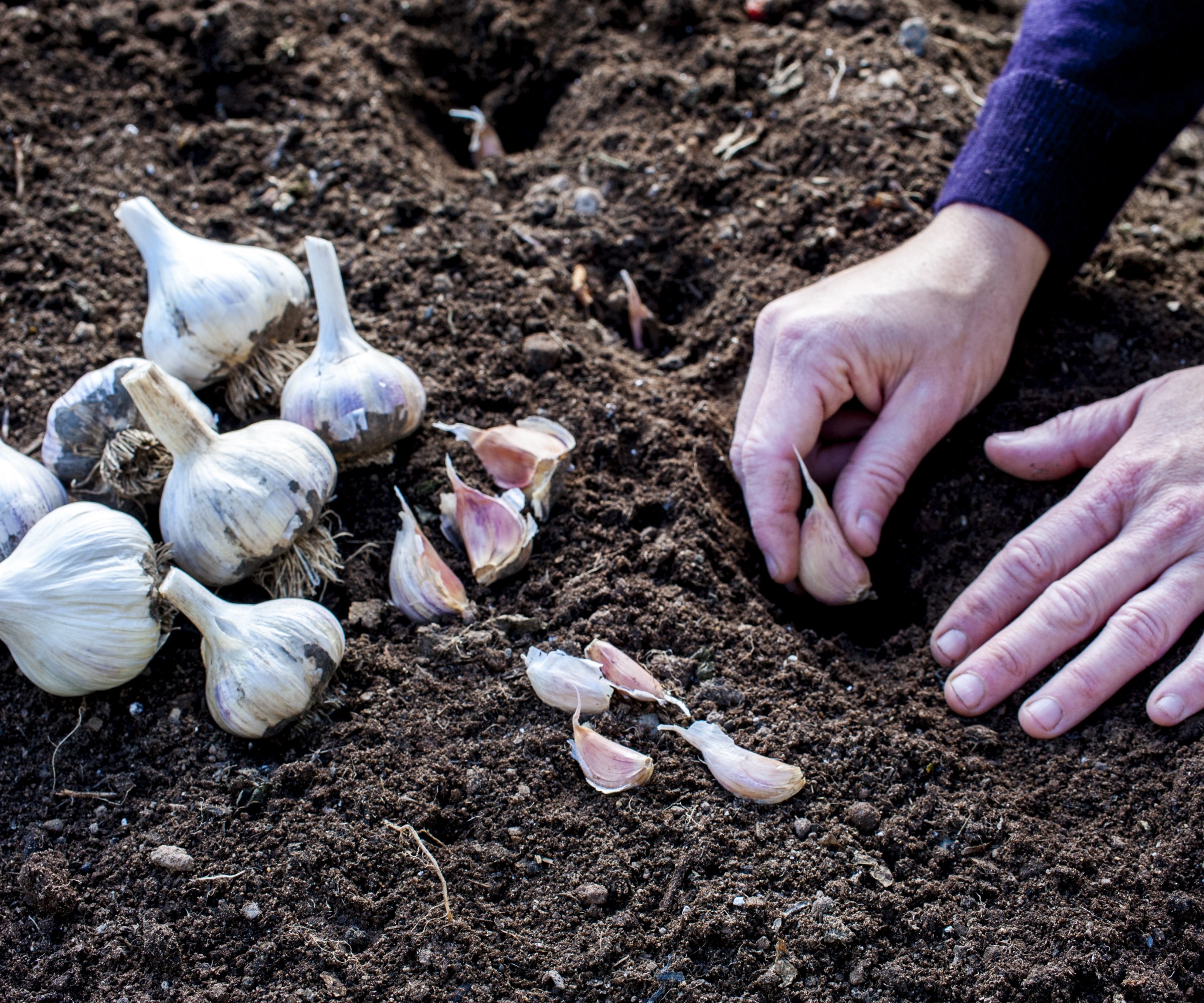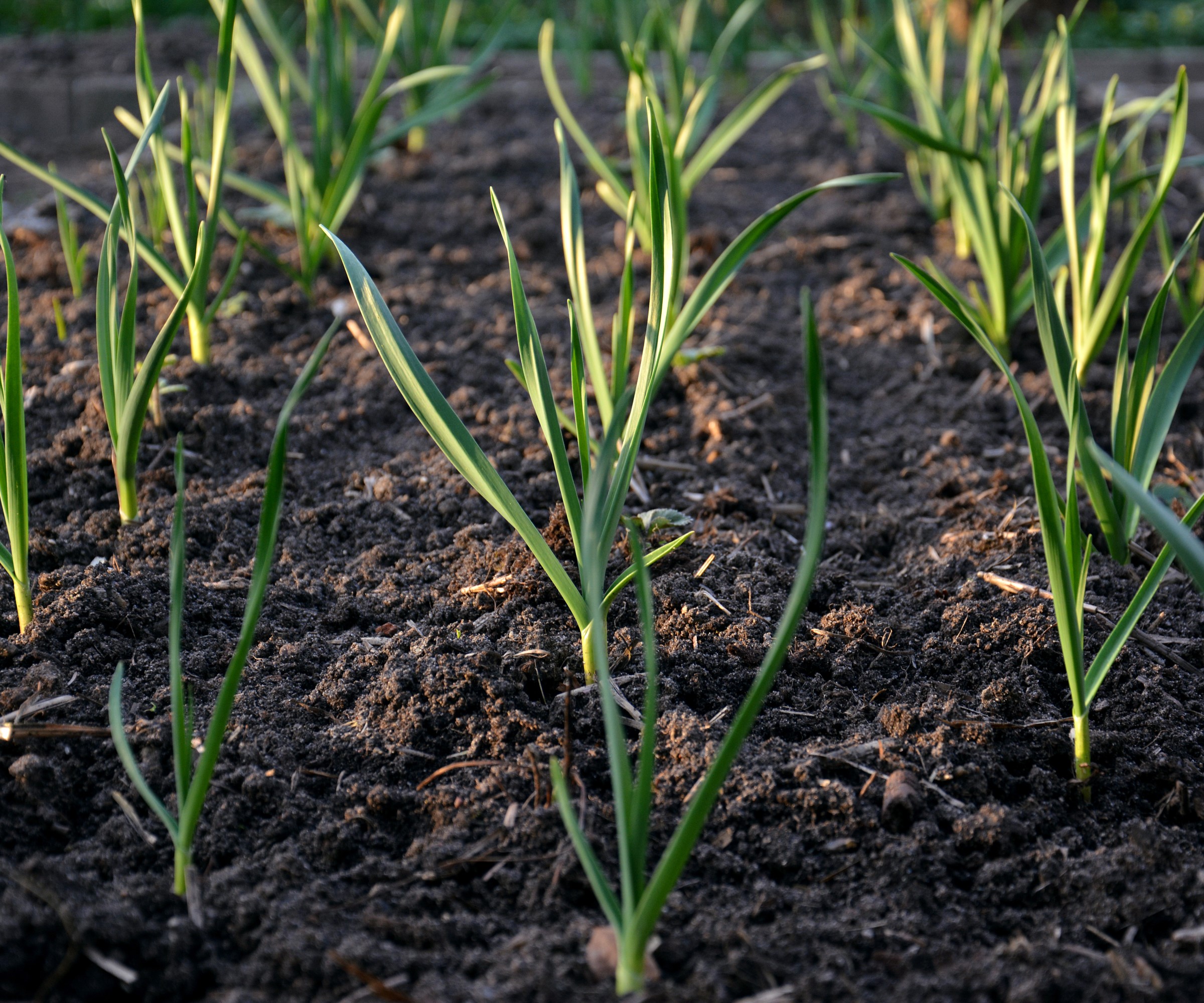When to fertilize garlic – expert tips for how to feed crops
You can make a successful start by feeding the crop prior to planting


Growing garlic is a long process and it can take nine months to go from planting the bulbs to getting a harvest. For that time and effort you ideally want a good pay-off and you can boost any potential crop with good fertilization.
Making sure you understand how to fertilize garlic is vital to helping the plant grow, produce the best bulb, and reduce the risk of pests and disease ruining a crop. Garlic needs feeding when it is planted and at regular intervals through its growing season if you want the best harvest.
If you are wanting to learn how to grow garlic, then making time to feed the crop is as important as any other part of the process. The result will be healthy and tasty garlic bulbs for all your culinary uses.

Adding fertilizer prior to planting bulbs will help garlic get off to a great start

Drew is a former professional gardener who also specialized as a grower of vegetables, fruit, and herbs. He worked in several walled gardens and grew edibles for chefs, and to sell to the public. He regularly grew garlic in his kitchen gardens, and fertilizing the crops was a key part of the process.
How and when to fertilize garlic
Start to think about how you intend to fertilize garlic plants before you even plant the bulb. The timing for when to plant garlic will depend on the type of garlic you are growing. Garlic comes in two forms, hardneck and softneck garlic, and hardier cultivars are either planted in late fall to early winter or others go into the ground in early spring. It is always recommended to use certified disease-free seed garlic rather than trying to grow garlic from grocery store garlic that can be treated to prevent it sprouting and comes with the risks of introducing disease into your backyard.
Boost your soil type by adding well-rotted manure or homemade compost into the site prior to planting the bulbs. This will do a variety of benefits, including enriching the garden soil, aiding with retaining water, and also help improve the drainage – which is a key aspect as the bulbs do not like sitting in wet soil. If you do not have access to well-rotted manure or compost, then a slow-release fertilizer can be added when garlic is planted in fall.
Jen McDonald, co-founder of Garden Girls, a gardening design company based in Houston, Texas, says that fertilizer is hugely important for garlic as it is a crop with ‘such a long growing cycle’ and that initial early application can make all the difference.
‘It promotes healthy roots upon first application and maximizes bulb growth in the spring,’ she says. ‘Using compost and fertilizer prior to planting will set you up for a successful start.’
Design expertise in your inbox – from inspiring decorating ideas and beautiful celebrity homes to practical gardening advice and shopping round-ups.
Garlic bulbs planted in the fall will then need additional fertilization come spring with a nitrogen-rich fertilizer. Either side-dress the crop by digging a small trench alongside the row of garlic and putting the fertilizer in, or broadcast the fertilizer over the bed. Water well after applying the fertilizer.
Around 45-60 days later, fertilize garlic again – this will be just before the bulbs start to swell – only this time you do not want it to be high in nitrogen, as nitrogen promotes foliage growth and could negatively affect the size of the bulb. Instead, opt for a high potassium fertilizer. The Garlic Farm recommends at this point to ‘apply sulphate of potash to your garlic every six weeks to give it all the nutrients it needs to grow successfully’.
All watering and feeding of garlic should be stopped in the last few weeks prior to harvesting garlic. Continuing to water garlic once the bulbs are well-formed can increase the risk of rotting and potentially affect how long you will be able to store your garlic.

Fertilizer for garlic can either be applied in liquid or granular form
What is the best fertilizer for garlic?
As well as knowing when to fertilize garlic, it's important to use the right type of fertilizer. Prior to planting, well-rotted manure or garden compost are ideal as they provide a balanced level of nutrients that are released slowly over an extended period of time. Ensure that any manure is well-rotted, as fresh manure is so high in nutrients that it can burn the roots of plants and ultimately kill them. The alternative is an all-purpose compost with a balanced ratio of NPK. The three main nutrients for healthy plants are nitrogen, phosphorus, and potassium, and they are shown as a ratio of NPK – or plant fertilizer numbers – on labels. For example, a balanced fertilizer will have a ratio of 10-10-10 or 20-20-20.
High-nitrogen fertilizers should be applied in spring to garlic bulbs planted in the fall. These types of fertilizer will have the first number the highest on the fertilizer label and feeds high in nitrogen include chicken manure pellets, fish fertilizers, and seaweed extract.
Certified organic gardener Jen McDonald explains how she adds a seaweed emulsion in the spring to her garlic as a liquid root drench, saying ‘it can be applied to leaves too, but I like to go right to the roots’. Jen highlights Kelp me, Kelp you from Fox Farm available at Walmart as one of her favorites.
Furthermore, Mark V Wessel, Director of Horticulture Research at Gardens Alive, recommends: ‘For an additional boost of nitrogen, I use blood meal or some of the poultry manure-based fertilizers.'
He adds: ‘Any well-balanced fertilizer will be helpful, just do not exceed the package recommendations.’
Fertilizers that are high in potassium, as recommended to apply later in spring and summer, include tomato fertilizer, comfrey fertilizer, and specialist fertilizers devised for use on vegetable or flowering plants. High potash feeds tend to be designed for growing tomatoes, or vegetables, and flowers to promote bigger crops and better blooms.
FAQs
Is chicken manure a good fertilizer for garlic?
Chicken manure is a good option as a fertilizer for garlic as it is a great source of nitrogen and also contains phosphorus, potassium, plus other nutrients needed for strong and healthy plants. Chicken manure is often sold as pellets – such as the Flosage pellets available on Amazon – that are slow to release the nutrients. Fresh chicken manure can contain harmful bacteria and need equipment such as gloves and masks when spreading. However, it is rare for home gardeners to use fresh poultry manure.
Is bone meal good for fertilizing garlic?
Bone meal is an organic fertilizer made from ground-up animal bones. The nutrient ratio for bone meal is typically high phosphorus and low in both nitrogen and potassium. As a high phosphorus fertilizer it is good for flowering plants, however, garlic rarely requires added levels of phosphorus unless the soil is deficient of the nutrient. It is recommended to conduct a soil test to see the exact type and nutrient make-up of your soil to see if it is low in phosphorus.
Are coffee grounds good for garlic?
Using coffee grounds for plants is a popular organic way to feed a wide range of plants. Coffee grounds are higher in nitrogen than phosphorus and potassium and can either be sprinkled around the plants or diluted into a liquid fertilizer. It is reputed that coffee grounds can also offer more than just a feed to garlic, helping to prevent snail and slug damage and also being a beneficial aid against fungal diseases, including white rot.
Plan the feeding process in your growing calendar for the season to ensure that you hit all the key timings for garlic. Remember that first early application prior to planting and note down the times for a high potassium feed that will help the bulbs swell.
There are choices for what to feed with and it is good to see there are options for organic fertilizers for growers seeking to avoid having to put chemicals on their vegetable garden crops. It definitely pays to do some research into options for feed and remember the importance that fertilizer has for garlic if you want to grow healthy bulbs and get the biggest crop you can.

Drew has worked as a writer since 2008 and was also a professional gardener for many years. As a trained horticulturist, he worked in prestigious historic gardens, including Hanbury Hall and the world-famous Hidcote Manor Garden. He also spent time as a specialist kitchen gardener at Soho Farmhouse and Netherby Hall, where he grew vegetables, fruit, herbs, and cut flowers for restaurants. Drew has written for numerous print and online publications and is an allotment holder and garden blogger. He is shortlisted for the Digital Gardening Writer of the Year at the 2025 Garden Media Guild Awards.